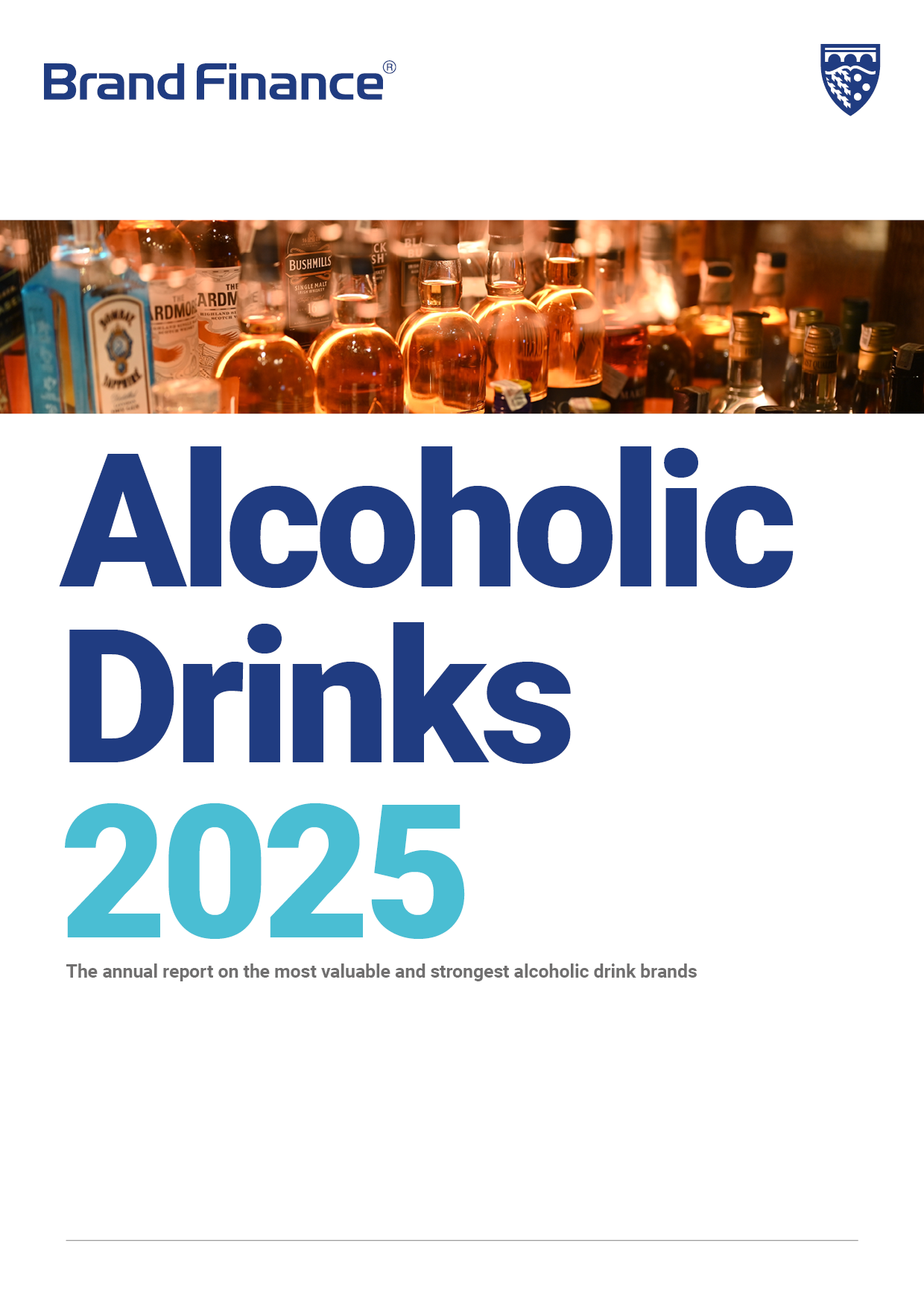This article was originally published in the Brand Finance Alcoholic Drinks 2025 report

Chairman,
Brand Finance Africa
As we celebrate the top 10 champagne and wine brands from around the world, it is worth reflecting on the journey behind each bottle - and the challenges they face.
Next time you sip a glass of wine, consider the following:
- The earth – Is it conducive to growing vines?
- The weather – Will it rain at roughly the right times? Will there be frosts? Will the sun shine long enough to ripen the grapes?
- The vines – Do the cultivar and strains suit the growing environment and will they stay disease free?
After five or six years of being tended to, will the vineyard supply quality grapes to produce wine actually worth drinking? If so, and once the wine has spent time in vats, or barrels, it may even be bottled and commercially available – sometimes within the same year in the Southern Hemisphere, but only after a number of years in the North.
But what if that cultivar chosen years ago is out of fashion by then?
Challenges like these drive some farmers to uproot their vines and plant cash crops such as apples and pears.
Still, the next time you look at a price tag, it may caution you to sip with respect rather than quaff. A 750ml bottle of Möet & Chandon, Taittinger, Veuve Clicquot, or Bollinger, will start around GBP50. But a bottle of Domaine de La Romanée-Conti (DRC) from the Burgundy region of France? Closer to GBP3,000. Ultimately, prices are sensitive to demand.
While top wine estates, especially in Bordeaux, France, still only produce wine from grapes grown on the estate, a growing number of brands are taking a different approach. These brands source their own grapes from various region and create their own blends.
Interestingly, champagne itself is a blending of grapes from a strictly controlled geographic area in northeast France – in Champagne.
The very top champagne ‘maisons’, or houses – Bollinger, Krug, Louis Roedere, Dom Pérignon, and others, will all have their minor variations as the wine makers work their magic. To achieve quality and consistency, most champagnes are non-vintage. They blend the current crop with a base wine – a blend of several vintages from previous years. Only in occasional, exceptional years do producers create a vintage champagne, using grapes from a single outstanding harvest.
Today, the industry faces an array of challenges providing severe headwinds. Climate change is pushing producers to change cultivars, Gen Z drinkers are drinking less alcohol and especially wine, while ready-to-drink (RTDs) and low and no-alcohol options (NoLo) continue to rise in popularity.
The largest drinks company in the world, the UK’s Diageo, illustrates these issues the industry faces and has seen its share price more than halve in the last three years.
On top of that is the uncertainty of global politics. Tariff wars, particularly under Donald Trump’s administration, will likely have lasting impacts. The imposition of significant tariffs on French, Spanish, Italian, and German wines could be catastrophic – especially for champagne producers.
Meanwhile, the burgeoning UK wine industry, growing dramatically and encouraged by climate change, may receive more modest tariffs.
As any marketer will know, of the Five P’s, one relates to Pricing and its sensitivities.
Turning to Africa, beer remains the alcoholic beverage of choice and invariably, the local brand in each market. Looking at the Brand Finance Africa 200 2025 ranking, there are many beer brands among the most valuable across the continent.
However, it is worth noting that South Africa’s Castle, Africa’s most valuable beer brand is now owned by Anheuser-Busch InBev (AB inBev). In East Africa, Kenya’s Tusker is now in the hands of Diageo.
Apart from Diageo and Ab inBev, Heineken, Pernod Ricard, and LVMH (owner of Moët & Chandon) are all very active in Africa. As buying power and the standard of living improves, Africa provides considerable potential, whereas much of the rest of the world is saturated.
South Africa ranks sixth globally, behind Italy, Spain, France, Chile, and Australia, in terms of wine exports by volume. However, a significant portion of this is unbranded bulk wine. The U.S. is South Africa’s fourth largest export market, making it a strategically significant destination for its wine industry.
Beyond exports, the considerable importance of wine tourism to the area around Cape Town is not to be underestimated, given its wonderful unmatched natural beauty. The area also boasts many gastronomic accolades as it has greatly improved its tourism and hospitality offering.
Meanwhile, a number of local wine estates are now in foreign hands, reshaping the landscape. French and U.S. buyers, among others, have quietly moved in.
Climate change is also bringing major shifts. Rising temperatures have led to the introduction of new cultivars, mainly sourced, and the planting of vines in cooler areas, determined by altitude and coastal areas from Mediterranean areas.
One side effect is the number of blends being produced by brands perhaps better known in the past for the simplicity of Chenin, Sauvignon Blanc, Chardonnay, Cabernet Sauvignon, Merlot, Pinot Noir, or classic Bordeaux-style blends.
Local South African wines remain relatively cheap by global standards, offering international retailers and restaurateurs the opportunity for hefty markups. Seeing this, producers selling on the local market are responding by increasing their prices which, in turn, puts pressure on the local consumer. Still, South African wine brands will continue to represent incredible value for money.

